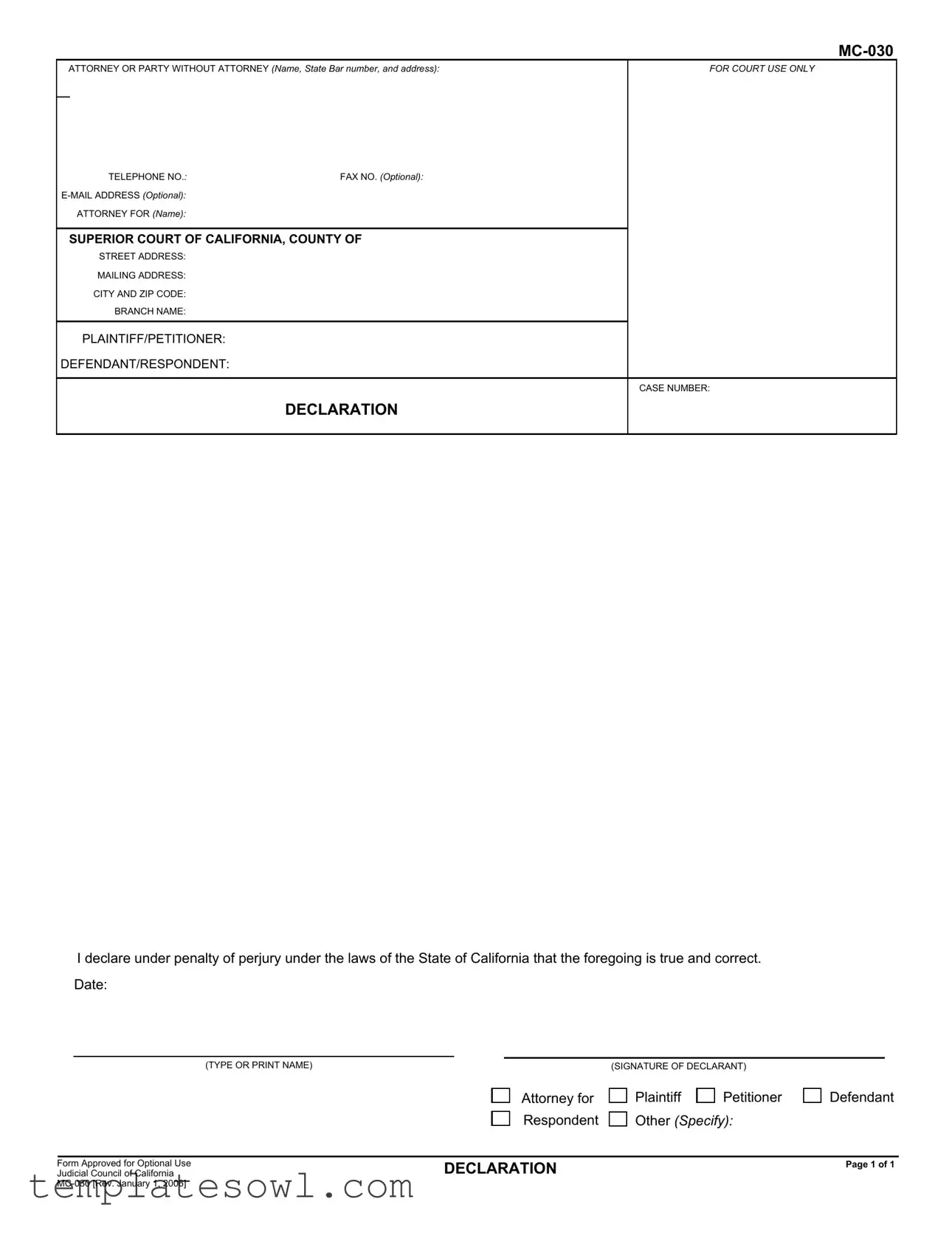What is the MC-030 form?
The MC-030 form, also known as the Declaration form, is used in California courts to provide a sworn statement of facts. It allows individuals to declare certain information under penalty of perjury, ensuring that the court receives accurate and truthful information pertinent to a case.
Who should use the MC-030 form?
This form can be utilized by any party involved in a legal matter, including attorneys or individuals representing themselves, commonly known as pro se litigants. It is particularly useful for plaintiffs, petitioners, defendants, and respondents who need to provide declarations to the court.
When is the MC-030 form required?
What information is needed to complete the MC-030 form?
To fill out the MC-030 form, you need to provide basic information including the name of the declarant, their address, the case number, and the parties involved in the case. Additionally, a statement affirming the truthfulness of the information provided must be included. Sign and date the form to validate your declaration.
Is there a specific format for the declaration?
Yes. The declaration should be clear and should outline the relevant facts supporting the party's position. It is essential that the information is factual and presented in a straightforward manner. Typically, the declaration begins with an introductory statement followed by a detailed account of the relevant facts.
Can the MC-030 form be submitted electronically?
In many California jurisdictions, electronic submission of court forms is allowed and encouraged for efficiency. However, it is advisable to verify the specific rules of your local court regarding electronic filing to ensure compliance.
What is the significance of the signature on the MC-030 form?
The signature on the MC-030 form represents a declaration under penalty of perjury. This means that the individual signing the form is certifying that the contents are true and correct to the best of their knowledge. False statements can have legal consequences.
How often should I use the MC-030 form?
The usage of the MC-030 form will depend on your specific case and the number of declarations required. You may need to submit the form multiple times throughout the legal process if additional declarations are necessary to support various motions or claims.
Where can I obtain the MC-030 form?
The MC-030 form can be found on the California Judicial Council's website or obtained directly from local courthouses. Ensure you are using the most current version of the form, as revisions may occur.

